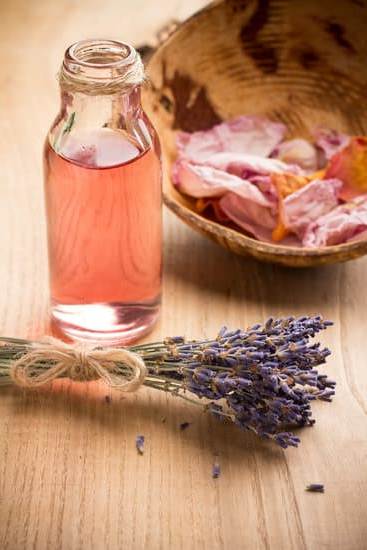Are you interested in learning how to make lavender oil aromatherapy at home? Lavender oil is renowned for its calming and soothing properties, making it a popular choice for aromatherapy.
In this article, we’ll explore the benefits and uses of lavender oil for aromatherapy, as well as provide a step-by-step guide on how to make your own lavender oil through steam distillation. Whether you’re new to essential oils or a seasoned DIY enthusiast, this comprehensive tutorial will walk you through the process of creating your own homemade lavender oil for aromatherapy.
Lavender oil has been used for centuries in traditional medicine and holistic healing practices. It is known for its relaxing and stress-relieving properties, making it an ideal choice for promoting relaxation and improving sleep quality. In addition to its aromatic benefits, lavender oil also has potential health benefits, such as relieving headaches and reducing anxiety. With its versatility and effectiveness, incorporating lavender oil into your aromatherapy routine can be incredibly beneficial for both your physical and mental well-being.
Before we dive into the process of making lavender oil at home, it’s important to understand the basics of lavender oil and its properties. In the next section, we’ll discuss the different types of lavender oil available, as well as their unique characteristics and uses.
We’ll also provide insights on gathering the necessary supplies and equipment for creating your own homemade lavender oil through steam distillation. Get ready to embark on an aromatic journey with lavender oil aromatherapy as we explore the fascinating world of essential oils.
Understanding the Basics
Lavender oil is a popular choice for aromatherapy due to its calming and soothing properties. However, not all lavender oils are created equal. It’s important to understand the basics of lavender oil before using it for aromatherapy to ensure that you are getting the right type for your needs.
There are several different types of lavender oil, each with its own unique properties and uses. The most commonly used types include Lavandula angustifolia (true lavender), Lavandula latifolia (spike lavender), and Lavandula x intermedia (lavandin). True lavender is known for its sweet and floral aroma, while spike lavender has a stronger, more camphoraceous scent. Lavandin is a hybrid of true and spike lavender, often used in aromatherapy products for its high levels of essential oils.
When choosing a lavender oil for aromatherapy, it’s important to consider the specific properties of each type. True lavender is often preferred for its gentle nature and versatility, making it suitable for a wide range of uses. Spike lavender, on the other hand, may be better suited for respiratory issues or muscle aches due to its stronger aroma.
It’s also essential to consider the source and quality of the lavender oil when using it for aromatherapy. Look for oils that are 100% pure and therapeutic grade to ensure that you are getting the maximum benefits from your aromatherapy practice. Understanding the basics of different types of lavender oil will help you make an informed decision when selecting the right oil for your specific needs.
| Lavender Oil Type | Properties |
|---|---|
| True Lavender (Lavandula angustifolia) | Sweet and floral aroma; gentle and versatile |
| Spike Lavender (Lavandula latifolia) | Stronger, camphoraceous scent; suitable for respiratory issues or muscle aches |
| Lavandin (Lavandula x intermedia) | Hybrid of true and spike lavender; high levels of essential oils |
Gather Your Supplies
Making lavender oil at home for aromatherapy is a simple and rewarding process that requires just a few key ingredients and equipment. Here is a detailed list of what you will need to get started:
1. Fresh Lavender Flowers: The most important ingredient for making lavender oil is, of course, the flowers themselves. To make the highest quality oil, it’s best to use freshly harvested flowers that have not been exposed to pesticides or other chemicals.
2. Carrier Oil: You will also need a carrier oil, such as olive oil or almond oil, to dilute the concentrated lavender essential oil before use. This will make it safe for topical application and ensure that it can be easily incorporated into aromatherapy blends.
3. Distillation Equipment: The distillation process is crucial for extracting the essential oil from the lavender flowers. You will need a large pot, a smaller heat-resistant bowl, some water, and a lid. Additionally, you will need a heat source such as a stove or hot plate.
4. Cheesecloth or Strainer: To separate the lavender essential oil from the water used in the distillation process, you will need either cheesecloth or a fine mesh strainer.
5. Storage Bottles: Once your lavender oil is ready, you will need dark glass bottles with tight-fitting caps to store it properly. Dark glass helps protect the oil from light exposure, which can degrade its quality over time.
As you gather these supplies and prepare to make your own lavender oil at home, remember to source high-quality ingredients and invest in durable equipment for best results.
Whether you are using your own garden-grown lavender or purchasing fresh flowers from a local supplier, ensuring that you have everything on this list will set you up for success in creating your homemade lavender oil aromatherapy project. With these simple tools at hand, you’ll be well-prepared to move on to the next steps in crafting your own lavender oil for aromatherapy use.
Step-by-Step Guide
Making lavender oil through steam distillation is a simple process that can be done at home with the right ingredients and equipment. Follow this step-by-step guide to create your own lavender oil for aromatherapy:
1. Gather your supplies: You will need fresh lavender flowers, distilled water, a large pot, a glass bowl, ice cubes, and cheesecloth.
2. Prepare the lavender flowers: Remove the stems from the lavender flowers and place them in the pot.
3. Add water: Pour distilled water into the pot until it covers the lavender flowers.
4. Set up the steam distillation apparatus: Place the glass bowl in the center of the pot on top of a small inverted bowl. Place ice cubes on top of the glass bowl lid.
5. Heat and cool: Bring the water to a simmer, then reduce heat and allow it to gently steam for about 45 minutes. The steam will condense on the lid and drip into the glass bowl as lavender hydrosol and essential oil.
6. Separate and store: Once done, carefully remove the glass bowl from heat. The essential oil will form a layer on top of the hydrosol; use a dropper to collect it into a small dark-colored glass bottle for storage.
By following this simple guide on how to make lavender oil aromatherapy through steam distillation, you can create your own high-quality essential oil for use in aromatherapy blends or as a standalone scent for relaxation and stress relief at home. Remember to research safe usage guidelines before creating or using essential oils at home to ensure proper handling and application techniques.
Safety Precautions
When it comes to creating lavender oil aromatherapy at home, safety should be a top priority. Essential oils are potent substances that require careful handling to ensure a safe and effective DIY process. In this section, we will discuss some important tips and guidelines for safely working with essential oils, specifically when making lavender oil at home.
Quality of Essential Oils
One of the most important safety precautions when making lavender oil aromatherapy is to ensure that you are using high-quality essential oils. Look for 100% pure lavender oil from reputable suppliers. Quality essential oils are free from additives and fillers, ensuring that you are working with a safe and effective product.
Dilution and Sensitivity Testing
Before using homemade lavender oil for aromatherapy, it’s crucial to dilute it properly in a carrier oil. This not only ensures safe usage but also helps optimize the benefits of the lavender oil. Additionally, perform a skin sensitivity test prior to using the diluted oil on your skin or in diffusers, as some individuals may have allergic reactions to essential oils.
Proper Storage and Handling
Essential oils, including lavender oil, should be stored in dark glass bottles in a cool, dark place away from direct sunlight and heat sources. When handling essential oils during the DIY process, use gloves and keep the work area well-ventilated to avoid inhaling concentrated fumes. It’s also important to keep essential oils out of reach of children and pets to prevent accidental ingestion or spillage.
By following these safety precautions when making lavender oil aromatherapy at home, you can ensure a safe and enjoyable DIY process while optimizing the therapeutic benefits of this wonderful essential oil.
Storage and Usage Tips
After successfully making your own lavender oil at home, it’s important to know how to store and use it properly to maximize its effectiveness in aromatherapy. Here are some expert tips on how to ensure that your homemade lavender oil remains potent and safe for use.
Storage Containers
When it comes to storing your homemade lavender oil, the type of container you choose is crucial. Dark glass bottles with a tight-fitting lid are best for preserving the quality of the oil. This is because dark glass helps protect the oil from light exposure, which can cause it to degrade over time. Additionally, make sure the bottle is completely clean and dry before transferring the oil into it.
Proper Storage Conditions
To maintain the potency of your lavender oil, it’s important to store it in a cool, dark place away from direct sunlight and heat sources. Excessive heat can cause the essential oils in lavender to evaporate more quickly, reducing its effectiveness. Keeping the bottle tightly sealed also prevents oxygen from getting in, which can oxidize the oil and alter its aroma and therapeutic properties.
Usage Tips
When using your homemade lavender oil for aromatherapy, always dilute it with a carrier oil (such as coconut or jojoba oil) before applying it to your skin. A standard dilution ratio is 2-5 drops of lavender oil per teaspoon of carrier oil. For diffusing, add 5-10 drops of lavender oil to a diffuser with water and enjoy the calming aroma throughout your space. Experiment with different application methods and concentrations to find what works best for you.
By following these storage and usage tips for your homemade lavender oil, you can ensure that it remains potent and effective for all your aromatherapy needs. With proper care and attention, you’ll be able to enjoy the soothing benefits of lavender essential oil for an extended period of time.
Exploring Aromatherapy Blends
Lavender oil is a versatile essential oil that is commonly used in aromatherapy for its calming and soothing properties. When blended with other essential oils, it can create customized aromatherapy blends that cater to specific needs and preferences. By learning how to make lavender oil aromatherapy blends, you can unlock a world of possibilities for creating unique scents and therapeutic benefits.
Here are some creative ideas and recipes for blending lavender oil with other essential oils:
1. Relaxing Blend:
This blend is perfect for promoting relaxation and reducing stress. The combination of lavender, chamomile, and bergamot creates a calming aroma that can help ease tension and promote a sense of calm.
2. Uplifting Blend:
For an uplifting and energizing blend, try combining lavender with lemon and peppermint. This refreshing blend can help boost your mood and provide a much-needed pick-me-up during stressful or tiring days.
3. Sleep Aid Blend:
If you struggle with sleep issues, this blend can be beneficial for improving sleep quality. The combination of lavender, cedarwood, and vetiver promotes relaxation and tranquility, making it easier to unwind and achieve a restful night’s sleep.
By experimenting with different essential oils and creating customized blends, you can tailor your aromatherapy experience to address specific needs such as stress relief, improved sleep, mood enhancement, or simply creating a pleasant scent for your home or workspace.
Not only are these blends simple to make at home, but they also offer the added benefit of providing natural solutions for various wellness concerns. Learning how to make lavender oil aromatherapy blends allows you to harness the power of essential oils in a way that suits your personal preferences and lifestyle needs.
Final Thoughts
In conclusion, learning how to make lavender oil aromatherapy at home can be a rewarding and satisfying experience. Not only does it offer a sense of accomplishment, but it also provides a natural and effective way to incorporate aromatherapy into your daily routine. By understanding the basics, gathering the necessary supplies, and following safety precautions, you can easily create your own lavender oil through steam distillation.
Making lavender oil at home allows you to control the quality and purity of the final product, ensuring that you are using a high-quality essential oil for aromatherapy. Additionally, storing and using homemade lavender oil properly will help maximize its effectiveness and shelf life. With the added bonus of being able to explore different aromatherapy blends with other essential oils, making your own lavender oil opens up a world of creative possibilities for customized scents and therapeutic benefits.
Overall, embracing the process of making lavender oil for aromatherapy at home not only grants you access to a natural remedy for relaxation, stress relief, and more but also serves as an educational and empowering experience. We encourage readers to take the knowledge gained from this comprehensive guide and embark on their own journey into DIY aromatherapy with homemade lavender oil.
Frequently Asked Questions
How Do You Extract Essential Oils From Lavender?
Essential oils from lavender are typically extracted through steam distillation. This process involves using steam to release the oil from the lavender flowers. The steam is then cooled, and the essential oil separates from the water.
What Is the Best Carrier Oil for Lavender Oil?
The best carrier oil for lavender oil is often almond oil or fractionated coconut oil. These carrier oils are light and absorb easily into the skin, making them perfect for diluting and applying lavender essential oil.
How Do You Harvest Lavender for Essential Oils?
Harvesting lavender for essential oils should be done when the flowers have just begun to open. This is when the concentration of essential oils in the flowers is at its highest. It’s important to harvest in the morning when the flowers’ oil content is at its peak, carefully cutting the stems without damaging the plant.

Are you looking for a natural way to improve your health and wellbeing?
If so, aromatherapy may be the answer for you.





